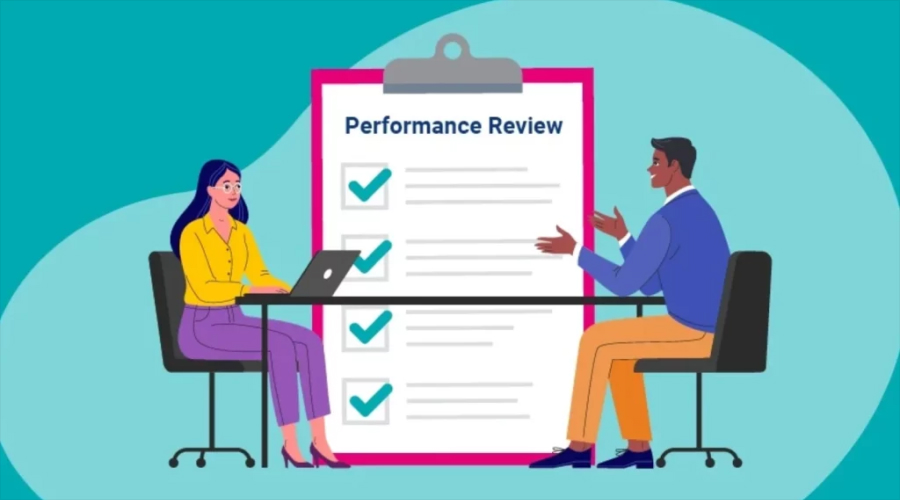
Being productive lays the groundwork for your company to flourish, especially in software development. Development teams today are tasked with building large-scale, time-sensitive solutions under increasing pressure. Yet, long hours at a screen don’t always equate to meaningful output.
Developers often spend days resolving complex technical issues. Even though this work is critical, it is largely invisible. This makes productivity difficult to quantify. When even one developer is unproductive, the effects ripple across the whole team and eventually the entire organization. Missed deadlines and stalled progress can have far-reaching consequences.
In the following sections, we’ll explore why developer productivity is so challenging to measure, identify key signs of inefficiency, and share practical strategies, including the use of employee activity monitoring tools, to help you assess your development team more effectively.
Why Is Analyzing Developers’ Productivity So Tricky?
Measuring a developer’s output isn’t as simple as tallying finished units on a conveyor belt. Much of their work, such as researching or debugging, produces no immediate visible results. A developer could spend hours identifying a single bug or reworking architecture, with nothing to show in a GitHub commit.
Traditional metrics such as hours worked, lines of code written, or closed tickets often fail to reflect real value. In fact, more code can sometimes mean less efficiency. Another complication is context switching
When developers juggle multiple tasks, their mental load increases and overall performance declines. Technical blockers, unclear requirements, or dependency delays also hinder progress invisibly. All of these nuances make it hard to assess productivity with surface-level data alone.
5 Signs Your Developers Might Not Be Productive
While measuring productivity is tricky, some signs may indicate issues worth exploring.
SIGN No. 1: Missed Deadlines
If a developer regularly works long hours yet still fails to meet deadlines, it could signal deeper inefficiencies. They may be misallocating time or struggling with distractions that are not being reported. Reviewing how their time is distributed across tools and tasks can help reveal whether the issue stems from a workload imbalance, poor prioritization, or a lack of clarity.
SIGN No. 2: Frequent Idle Time

Extended periods of inactivity, especially during active sprint phases, can indicate that a developer is stuck or demotivated. These gaps often don’t show up in project tools unless you’re actively tracking task flow and status updates. If a developer’s progress regularly stalls without external blockers, it may be time for a direct conversation or more structured daily check-ins.
SIGN No. 3: Excessive Time
A developer consistently spending large chunks of time in non-development tools or on unrelated websites may be struggling with focus or disengagement. While occasional diversions are normal, recurring patterns suggest deeper attention issues or a lack of meaningful work. Monitoring which applications and websites dominate their screen time can provide insight into why they are lagging.
SIGN No. 4: Poor Code Quality
When most code gets pushed at the last minute before a sprint ends, it often means the developer rushed through tasks without proper research, planning, testing, or peer review. This can lead to increased bugs, failed deployments, and a long-term technical debt. If you notice this pattern, it may be time to look at their commit history alongside code review feedback to see if quality is being compromised under pressure.
SIGN No. 5: Lack of Progress Updates

Developers who rarely speak up in standups or fail to provide regular progress updates may not be fully engaged with the team or project. Communication gaps can prevent early detection of issues and allow problems to linger on until they impact delivery. If updates are vague, inconsistent, or missing, it could indicate more than just a quiet work style.
Why You Should Analyze Developer Productivity
Software teams are at the core of most business operations today, and their performance directly impacts product delivery timelines. When developers aren’t productive, it affects the entire project pipeline. This makes it vital to understand how developers spend their time and what bottlenecks they face.
By adopting a structured approach to productivity analysis, you can gain better control over outcomes and create a healthier, more focused development environment. To make meaningful improvements, you’ll have to go beyond assumptions and identify where productivity is thriving and where it’s falling short.
- Spot problems before they affect delivery: By monitoring productivity signals over time, you can catch early signs of burnout, disengagement, or technical blockers in time. Developers may not always raise flags themselves, so having visibility into work patterns allows you to step in with the right support when it matters most.
- Ensure alignment with team goals: Tracking how developers spend their time reveals whether they’re working on high-priority tasks or getting pulled into less strategic work. This visibility ensures that individual efforts align with broader team and organizational goals. Such measures help improve focus and reduce time waste.
- Improve support and resource allocation: When you understand who is overloaded and who may be underutilized, you can rebalance workloads more effectively. Analyzing productivity helps distribute tasks fairly by ensuring the availability of critical resources and creating more sustainable team dynamics.
Also Read: Roles and Responsibilities of Full Stack Developers: Unveiling the Versatility
4 Ways to Track Developer Productivity
Practical productivity analysis starts with recognizing patterns and improving how work flows across the team. Here are four practical ways to evaluate developer performance while maintaining trust and autonomy.
1. Track Productivity Trends with Activity Monitoring Tools

One effective method for identifying work patterns is through employee activity monitoring software such as TimeBee.app. Designed for dynamic teams, this tool shows how long developers work, what they work on, and how their time is spent.
- Time Tracking: TimeBee.app tracks when a developer is actively working versus when their machine remains idle. When the system detects inactivity beyond a set threshold, it automatically logs idle time. This provides managers with data to identify patterns of disengagement, workload misalignment, or potential burnout.
- App and Website Usage: The tool records which apps and websites developers use, and for how long. You can categorize them as productive, neutral, or unproductive. This lets you understand whether someone spends most of their time coding, researching, or getting distracted.
- Activity Summaries: TimeBee.app displays activity summaries that show the percentage of time spent on different activity types. You can easily track productivity trends and spot unusual patterns, like declining engagement or inconsistent output.
- Project Progress: TimeBee.app breaks down how much time developers spend on each project and sub-task. You can see who’s working on what, for how long, and whether effort matches project priorities. This helps you rebalance workloads and improve sprint planning.
- Screenshots: It captures screenshots at fixed intervals set by the administrator. Instead of relying solely on logs or self-reporting, these images provide tangible insights into the workflow. Moreover, it promotes transparency, reveals hurdles, and helps align work goals.
- Email Notifications: TimeBee.app sends custom email updates based on your preferences. You can choose to receive reports on activity summaries, attendance, hours tracked, or app usage. Select individuals, teams, or the entire company to ensure relevant and focused updates.
2. Analyze Code Quality and Commit Patterns
Evaluating code output isn’t just about quantity—it’s about consistency, clarity, and collaboration. To gain meaningful insights, start by tracking commit frequency and reviewing commit messages.
Developers who make frequent, incremental commits with descriptive messages tend to have better workflow habits and clearer thinking. Look for signs such as regular push activity, participation in code reviews, and alignment with coding standards.
Avoid judging performance solely by volume. Large, last-minute commits or rushed patches often reflect time management issues or deeper process flaws. By focusing on the structure and clarity of contributions, you can recognize developers who not only write good code but also support long-term maintainability.
3. Review Task Completion and Estimates

Tracking how long tasks actually take compared to expected estimates is a reliable way to uncover inefficiencies in planning or execution. Use employee activity monitoring software to log initial time estimates and compare them with actual time logs gathered. When tasks consistently overrun, it may signal unclear requirements or unrealistic expectations.
Discuss with your team during retrospectives or one-on-one meetings to see how accurate time estimates were. If tasks are often finished much quicker than expected, it might mean the work isn’t challenging enough or that some developers have more capacity than others. This type of review encourages teams to plan more realistically, refine user stories, and improve the balance of work across the team.
4. Monitor Daily Work Summaries
Daily stand-ups and written updates are powerful tools for staying updated with your team’s day-to-day momentum. Implement a simple structure, such as “What I did yesterday, what I’m doing today, and blockers,” to ensure updates remain relevant and concise.
Regularly communicating and reviewing these summaries allows team leads to quickly spot recurring blockers, shifts in focus, or signs of disengagement. If a developer repeatedly gives vague or repetitive updates, it might be time to initiate a check-in or clarify expectations.
Pair these updates with time tracking and task completion data to create a well-rounded view of progress and engagement. This ongoing insight helps you proactively offer support, course-correct priorities, and ensure accountability, without needing constant oversight.
In Closing
Understanding and measuring developer productivity is essential for keeping projects on track and meeting client expectations. Activity monitoring tools offer valuable visibility into how time is spent. It tracks active versus idle periods, captures app and website usage, and even takes scheduled screenshots to provide real-time context. These features help you to identify barriers and optimize workloads to ensure team efforts align with strategic priorities.
When used thoughtfully, smart tracking goes beyond oversight—it supports a culture of clarity, accountability, and balance. By focusing on patterns of productivity rather than micromanaging output, organizations can create an environment where developers stay focused and contribute more meaningfully to business goals.






